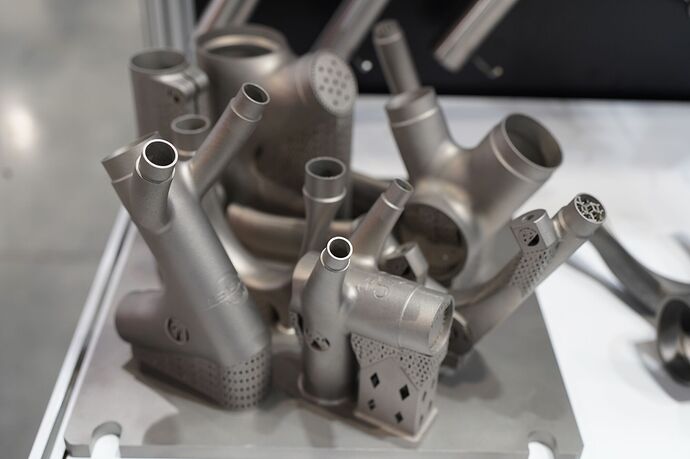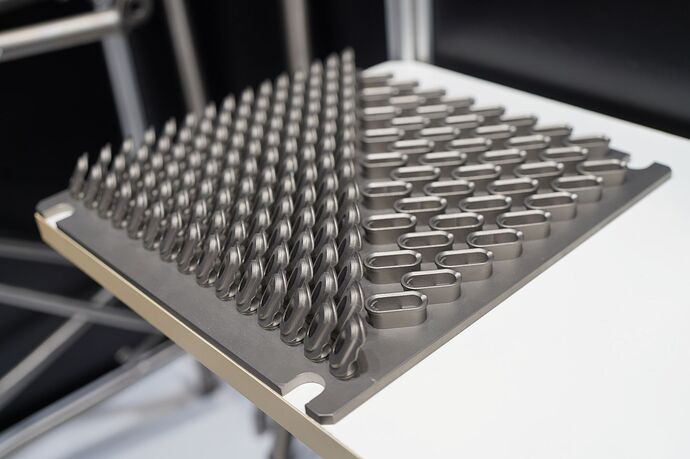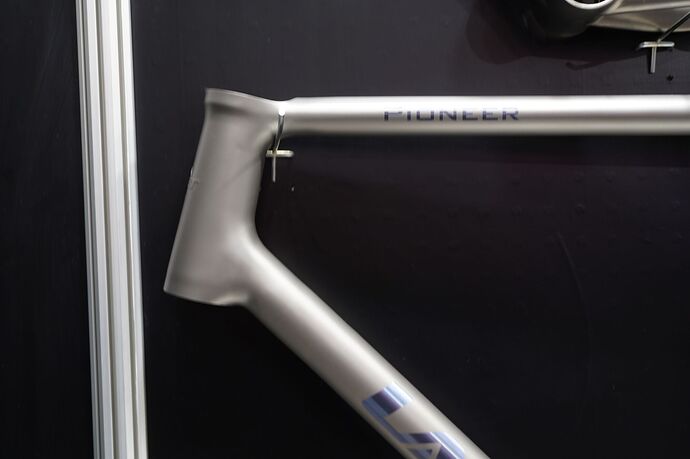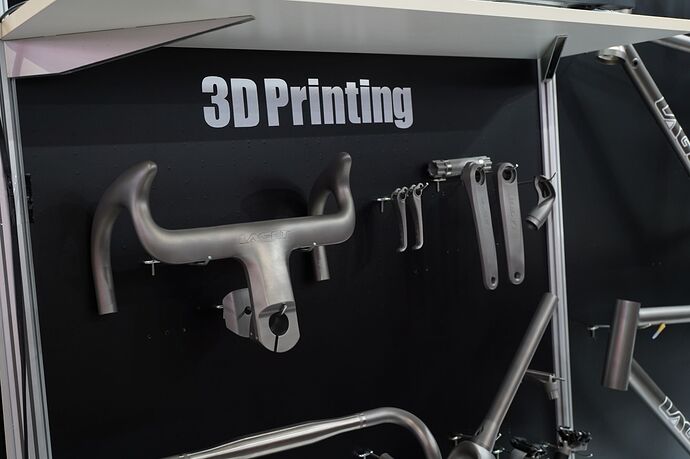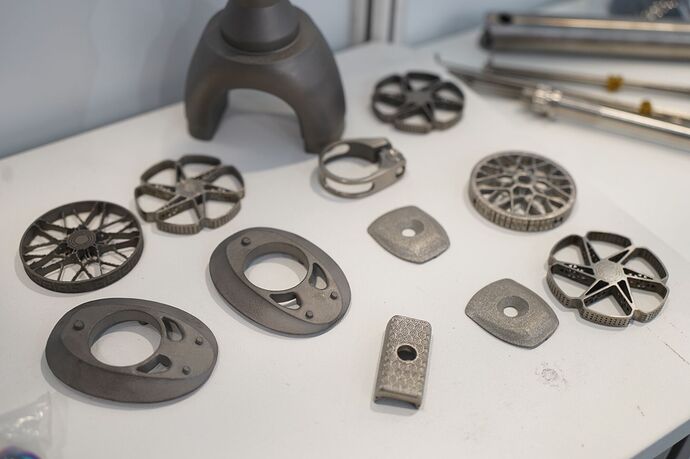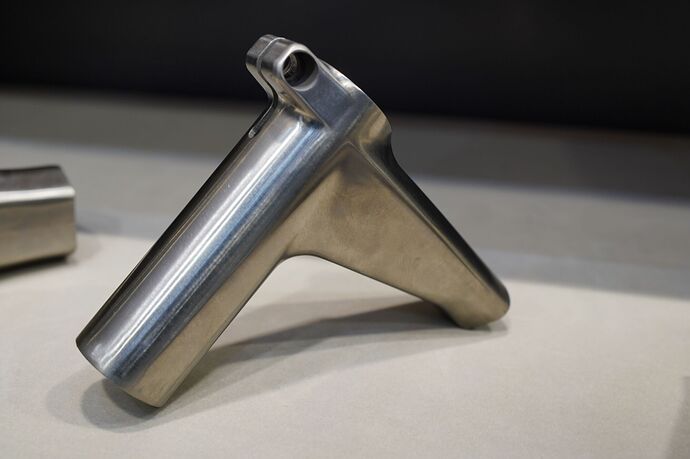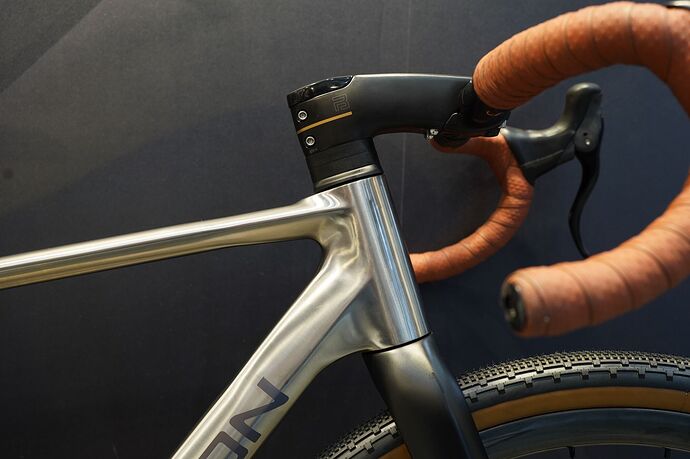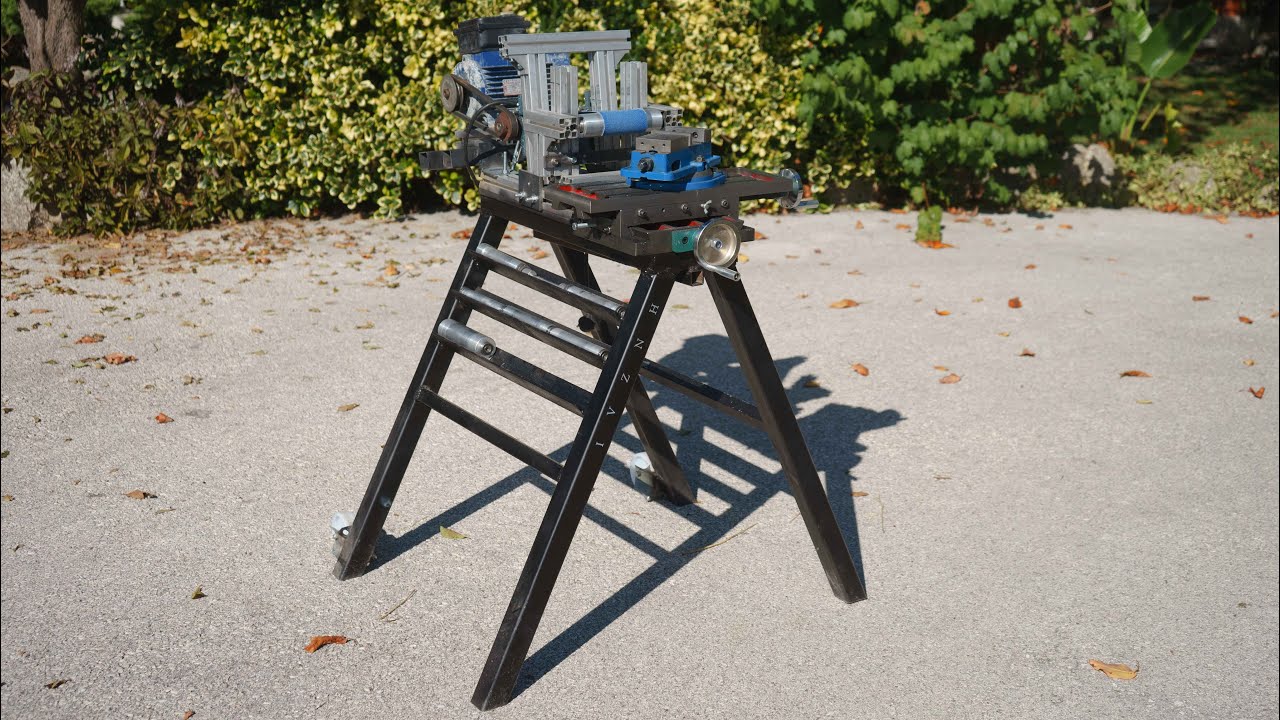FTW has a YT channel. Legend in the frame build community. I used to ride with him and Doc from BMW back in the day at Plattekill.
I so want to build a 36er. Maybe this will help with tires and parts.
I have a friend with a 36er. He is about 12 feet tall and a good rider ![]() .
.
He can ride that bike over anything. Slow and steady. It is like watching a tractor drive through a field.
The real humor is the 2” tires he is limited to!
Oh! Fun to see this reposted here.
I’ll have my work cut out for me if the crowdfunding campaign is successful. ![]()
I’ve ridden this thing a fair bit even though it’s way too big for me. To be honest, I think it’s surprisingly easy to manoeuvre. I even took it on some reasonably narrow and windy singletrack. I also caught like 3 feet of air (not quite, but I was airborne) on it.
Oh, and the tyres are 2.25" ![]()
It seems like a real fun bike. I do have a design for a 36er but tires and rims are stopping me.
At 6’9", I am the target audience for 36ers. I have spent a lot of time thinking about them and paying attention to the XXL market. It would neat to see the platform get more acceptance so good tires were developed, but I am not holding my breath. I think the market is just too small. 36ers are 3rd or 5th bikes for enthusiasts, or else 1st bikes for retired NBA players.
I have ridden a 36er, and it was fun. It makes sense for an all-road bike, but for a MTB, I just don’t see the benefit. I have never once wished for a bigger wheel.
The market will never be big enough to drive the development of suspension forks.
Being heavy and breaking stuff has instilled a fear being dependent on rare or proprietary parts. After much agonizing about it I have stuck with 29" wheels because I like the idea of being able to go to a bike shop and buy a spoke, tube, or tire should I break something.
We were discussing that topic. At one point he had an oddball Marzocchi with a ton of offset. It didn’t work well and may have ended up damaging the lowers.
We were discussing a triple crown with custom clamps but non of us will risk designing/machining something that critical with our limited abilities.
I remember seeing forks like that from dirtysixer. He doesn’t seem to offer them anymore…
Lots of applicable knowledge here: from brazing to work holding.
I discovered a channel named Cass Labs a few days ago. The work Matt is doing is incredibly impressive and inspiring. He’s built a custom data acquisition system and suspension analysis suite with optimization capability. His videos are a great watch. I love the empirical, quantitative approach he (Matt) applies to data collection and bike design.
Youtube Channel: https://www.youtube.com/@cassLabs
Website: Cass Labs LLC
Some interesting stuff in these photos:
Here is what @adamsklar and I found at Taipei Bike show:
It was my first time at the show, and it was cool to see how many different tool makers, screw manufacturers, testing machines, decal companies, etc… there are in the world. However, I was disappointed with how much of an echo chamber of ideas the bike industry is.
Fully-internal routing is the next trend? Everyone scrambles to make their own internally routed headset and stem. There were very few products for the average bike enthusiast.
Optimistically, I think that opens the playing field for smaller brands with great ideas who want to play outside the big bike industry.
Here are some details too nerdy for the public:
Asia is leading the titanium innovation:
TSB Cycles and Hilite are the two biggest titanium manufacturers in China. ORA Engineering is the biggest in Taiwan.
Hilite was not at the show, so I was unable to visit. TSB was showing their 3D printing and designs, which looked promising. The finish quality was excellent.
Personally, I’m not a fan of 3D printing for the sake of 3D printing, but I think TSB is doing a great job. Having printers and testing equipment in-house can push the state of the art. They mentioned they could get closer to $1.5-$2/g, which helps get printed parts more mainstream.
There are also many smaller titanium bike companies in China. I sat down with a few to chat and learn more. Most of these companies are from the Xi’An provance. It turns out that most of the world’s titanium is refined and produced in that region. Even the smaller companies are experimenting with 3D printing:
Finally, there was the brand T&K, which uses cast titanium lugs from the golf club industry. The lugs were truly impressive:
They said each lug was X-rayed for defects during the casting process. The internal and external surfaces were extremely impressive to me.
I am ashamed to admit that I assumed they were an OEM manufacturer for other brands simply because they made great bikes and were Asian. This is the exact Asian basis I am trying to overcome! It turns out it’s their own design, brand, and business. They are targeting the Taiwanese and Japanese markets. Its great to see the asian brands innovating and doing their own thing.
Matt is doing incredible work and I’m so excited he’s sharing out his new ideas. I got to use some of his experiments at the old day job and it’s pretty cool to see the evolution of his concepts/practices/experiments.
Plus he’s a pretty shreddy quick rider.
Plenty of interesting things at the show for sure. I was also there for a 2.5 days before setting off for various factory visits. So much info to absorb and process.
Wow!!! Why didn’t anyone do that earlier? I mean, golf clubs have been around a while…
I guess that’s the echo chamber you were talking about
I would guess that aside from tech challenges one of the drivers is market size and development $$.
IIRC, US Golf is a $70-$80B industry whereas US Cycling is ~$5B (and most of the US market is <$1000 bikes).
(I may be wrong but Callaway is valued around $2.5B whereas Trek + Spec combined around $2B.)
We were at the Sedona Mountain Bike Festival last week. The Radavist checked out a few of our bikes and our summer intern got the article cover photo!
I have that mill table and I was wondering how I could use it now that it’s not useful to me anymore…
I don’t hate it, but it seems overly complex and expensive, plus it exhibits a lot of slop and imprecision (though you can probably dial it in I suppose, with some effort).
My biggest problem though is how slow it is. I can have that miter hand-filed in half the time. Without filling my shop with abrasive grit. Just that rigmarole with the turnbuckle, every time you want to change mandrels, there’s got to be a better way! Like how every belt-sander ever made tightens the belt maybe? ![]() When you need to replace the belt (which will be often), even worse rigmarole. He didn’t show that procedure but it won’t be easy.
When you need to replace the belt (which will be often), even worse rigmarole. He didn’t show that procedure but it won’t be easy.
Can you even make that contraption without a mill or a lathe? Seems like a lathe would be a minimum, for making the custom-size mandrels. They have to be smaller than the cut you want to make, by twice the thickness of the belt, so the need for custom-sized mandrels is unavoidable. And if you have a lathe, then you should miter on the lathe, with holesaws. If you have a mill, even better. You’ll never re-create the precision and rigidity of a mill with bolted together aluminum extrusions.
Other than that though, you’re really onto something there!
